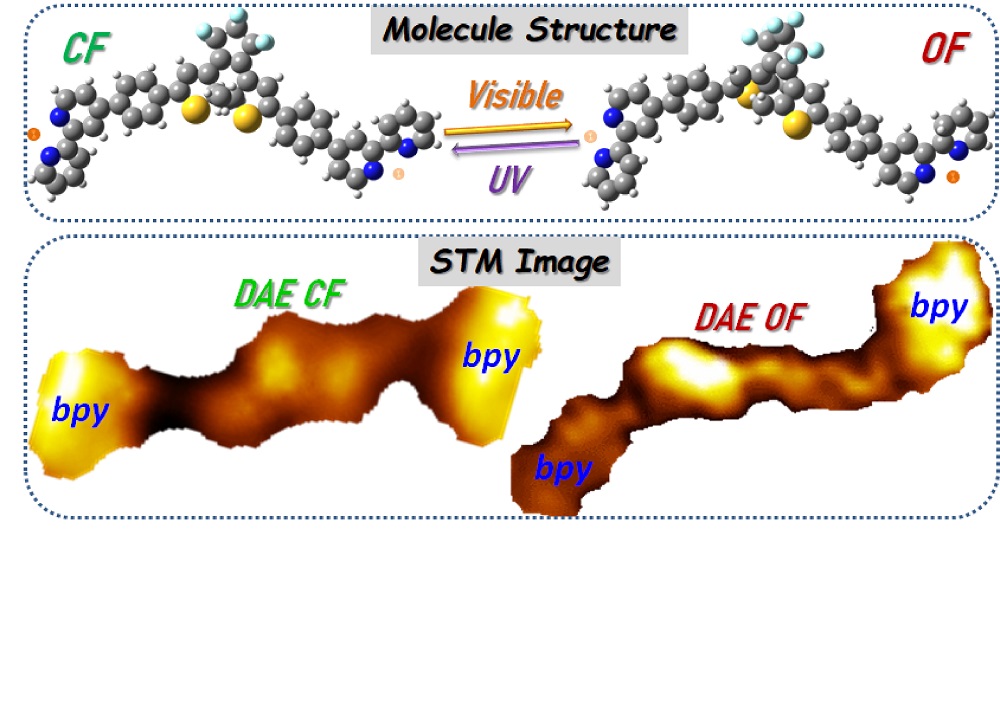Diarylethene is a prototypical molecular switch that can be reversibly photoisomerized between its open and closed forms. Ligands bpy-DAE-bpy, consisting of a phenyl-diarylethene-phenyl (DAE) central core and bipyridine (bpy) terminal substituents, are able to self-organize. They are investigated by scanning tunneling microscopy at the solid-liquid interface. Upon light irradiation, cooperative photochromic switching of the ligands is recognized down to the sub-molecular level. The closed isomers show different electron density of states (DOS) contrasts, attributed to the HOMO or LUMO molecular orbitals observed. More importantly, the LUMO images show remarkable differences between the open and closed isomers, attributed to combined topographic and electronic contrasts mainly on the DAE moieties. The electronic contrasts from multiple HOMO or LUMO distributions, combined with topographic distortion of the open or closed DAE, are interpreted by density functional theory (DFT) calculations.

